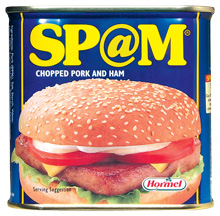 Email marketing has a problem. Our opinion of it is tarnished, both by the companies that overuse it as a marketing device and by the steady feed of spam that we receive on a daily basis, more often than not purporting to be from a bank that we don’t bank with, or from some random offering v1agra!
Email marketing has a problem. Our opinion of it is tarnished, both by the companies that overuse it as a marketing device and by the steady feed of spam that we receive on a daily basis, more often than not purporting to be from a bank that we don’t bank with, or from some random offering v1agra!
This irritable quantity of unwanted emails sculpts our perceptions of email as a digital marketing tool. We tend to overlook the other emails that we get each day, from contacts that we know, or recognise, containing useful information that we selectively skim read, then either file or act on by clicking on, or flag for later consideration when relevant. Meeting times, statistics, follow-up reports, circulars, newsletter subscriptions, special offers … there are soooo many useful things that we get from emails but when it comes to using them for marketing purposes, a lot of people write them off before giving them a chance.
So does email marketing work?
First of all let’s put it in perspective. Ten years ago, running a promotional direct mail campaign (note the lack of an ‘e’ before the word ‘mail’) went something like this:
1. Prepare the content.
2. Brief the ad agency who then conceptualise it, design it, edit it and print it once approved.
3. Merge and export your database.
4. Get the materials fulfilled, including your reply paid card, and mailing labels printed, peeled and applied.
5. Lodge it with the mailing house.
6. Wait (for up to a month for the responses to trickle in).
7. Pass the leads onto the sales department to follow-up and then tally the number of recipients to measure the results.
With the above scenario I remember that if we generated a response of more than 2% from the total target list, it was considered successful.
Fast forward to here and now. If you have a message to communicate:
1. Prepare the content.
2. Code it, upload it, email it.
3. Check back in 3 hours and see how successful it has been.
Email marketing is simpler to produce, quicker to organise and way more cost effective. Emails get straight to the person they were intended for (most of the time) and are far more responsive than ‘conventional’ media. They are also a fabulous strategic device when considering your other business marketing tools and communication objectives. For example:
- Regular emailings and beneficial content can quickly hardwire your business web address into your customer’s minds.
- Hyperlinks leading to previously unexplored parts of your website where useful information is held, help to develop well-worn paths if they keep coming back for more.
Furthermore the customer statistics are far more detailed and consequently useful. It’s possible to find out who clicked, on what, how many times, who the bought something, who is interested but undecided, and what caught their eye.

There are also the viral possibilities of your customers forwarding interesting or useful information to their friends and colleagues.
Ultimately there are the interactive possibilities. Emails allow your customers to email you back which is where the magic happens. Your simple email campaign has suddenly opened up conversations.
The one BIG disadvantage to email marketing; it’s all over very quickly.
Conversely the craft and thought that goes into a well-designed print mailshot still means that recipients will spend much more time reading and appreciating the content if it’s relevant. What’s more, when people like something tangible they tend to keep it, usually somewhere prominent like on their desks which can provide days and often weeks of in-their-face branding. This is why we always advise our clients to vary their promotional mechanisms.
And now the proof.
Last week we rolled out a new ecommerce website launch announcement on behalf of a client of ours. Within three hours of releasing the emailer, more than 26% of the recipients had read the email and 16% of them had clicked through to the new website. Our client’s web traffic for that day more than doubled and new sales orders were placed too. Bish bash bosh, job done.
So yes, email marketing works extremely well. It is both efficient and cost-effective too as long as you make it useful to your customers.

